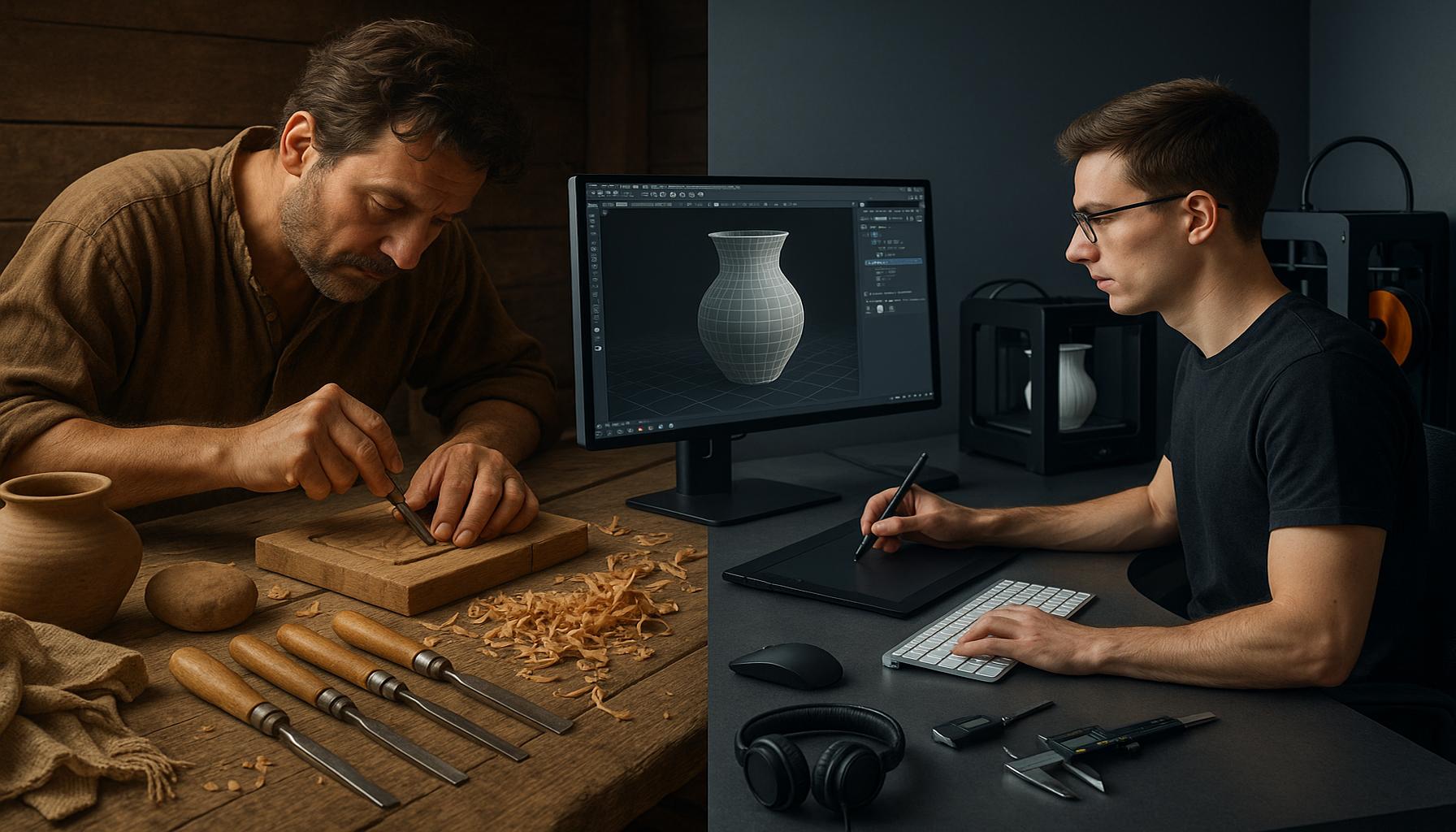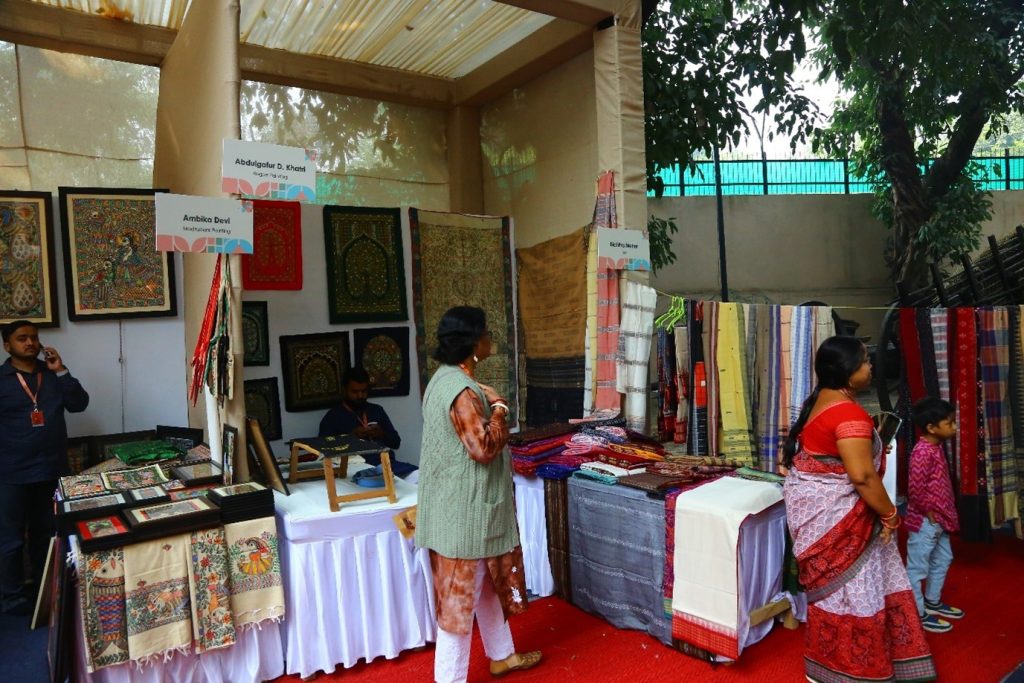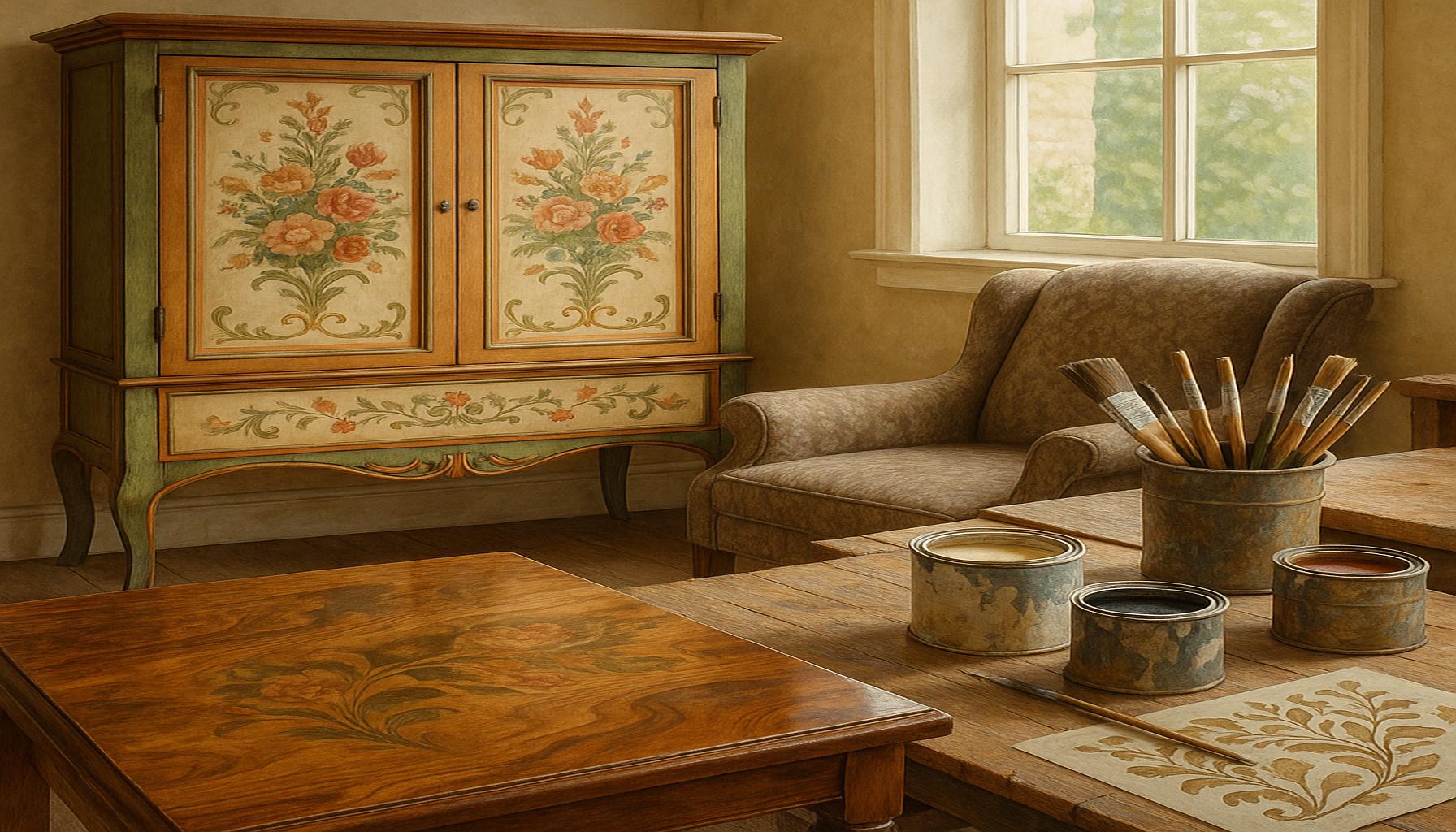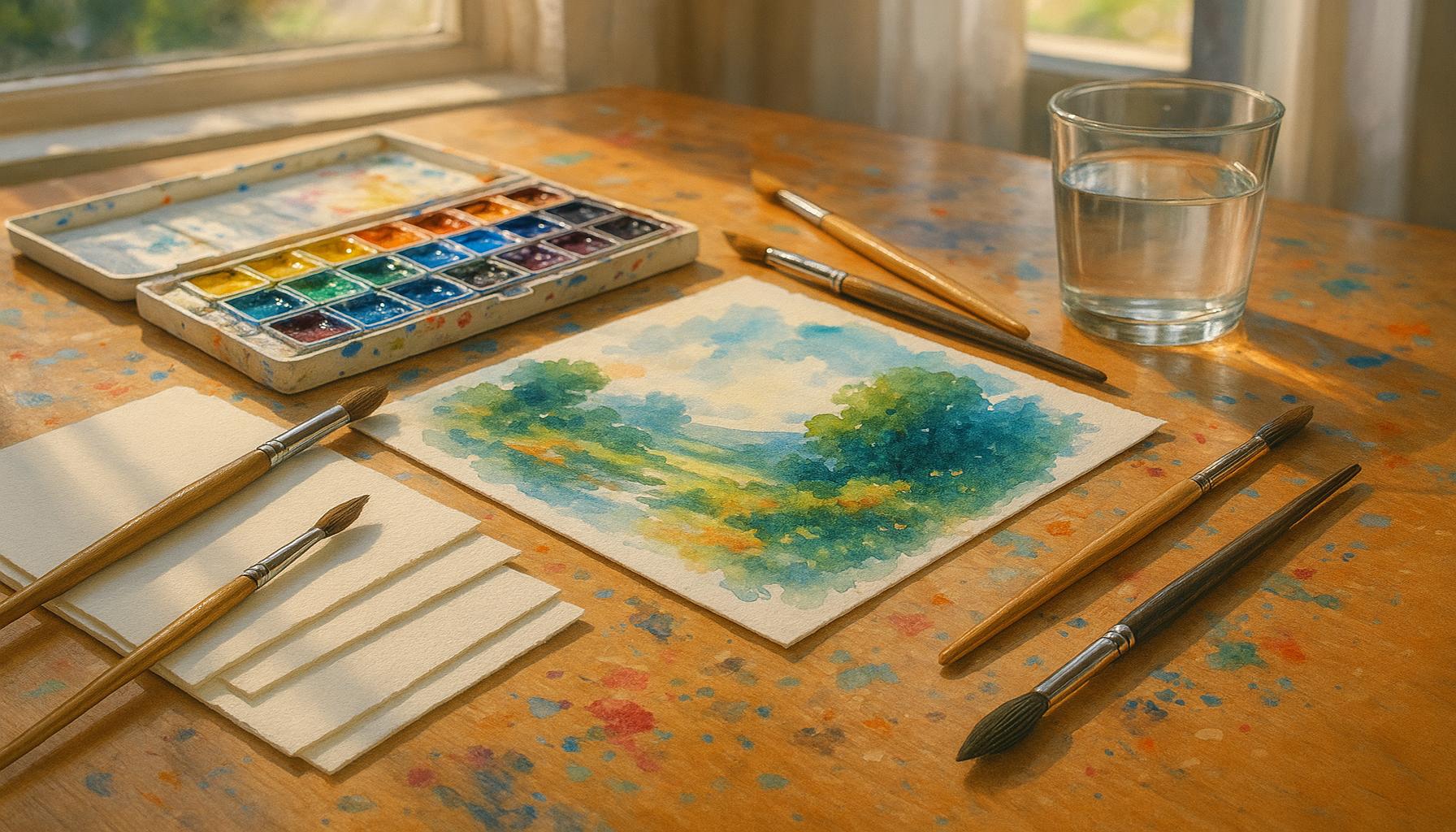The Evolution of Crafting: How Artisan Traditions Adapted to the Digital Age

Crafting in the Digital Age
The world of crafting is undergoing a significant transformation as traditional artisans embrace modern technology. As a time-honored practice that conveys cultural heritage and individual creativity, crafting finds itself at the crossroads of history and innovation. The incorporation of digital tools into artisan traditions has sparked a creative renaissance, characterized by a fusion of age-old techniques and cutting-edge technology.
Key factors driving this evolution include:
- Access to Global Markets: In the past, local artisans had limited exposure beyond their immediate communities. Today, platforms such as Etsy and Amazon Handmade provide artisans the opportunity to sell their creations to a global audience. This democratization of the market allows for unique products to reach buyers from various cultural backgrounds, creating a diverse tapestry of buyers and sellers. For instance, a woodworker in Oregon can seamlessly sell handcrafted furniture to a buyer in Tokyo, showcasing the potential of online platforms to bridge geographical divides.
- Digital Tools and Techniques: The advent of technologies like 3D printing and laser cutting has revolutionized traditional crafting methods. Artisans can now create intricate designs with precision that was previously unattainable. For example, jewelry makers are using 3D printers to craft customized pieces that reflect personal stories, while textile artists employ laser cutters to produce elaborate patterns on fabrics. By utilizing these tools, artisans maintain their craft’s essence while expanding the possibilities of their creations.
- Social Media Presence: The influence of platforms like Instagram and Pinterest cannot be understated in the realm of modern crafting. Artisan creators can showcase their work in visually compelling ways, engaging a wider audience beyond local markets. Hashtags such as #handcrafted and #artisanal have become popular avenues for artisans to connect with potential customers and other crafters. A successful Instagram campaign can propel a small artisan into the limelight, as seen with accounts like @knitbrooks, which transform knitting into a visual storytelling format that captures followers’ imaginations.
These adaptations not only broaden the reach of handcrafted goods but also challenge traditional concepts of artistry. By merging age-old skills with modern technology, artisans are free to experiment with new materials and techniques. This dynamic interplay leads to innovative designs that honor their cultural roots while appealing to contemporary tastes. The crafting landscape is increasingly characterized by diversity and creativity, encouraging artisans to push boundaries and redefine their artistic expressions.
This article aims to delve deeper into how these artisan traditions have responded to the digital age. By examining compelling examples and narratives across various crafting disciplines, we aim to uncover the profound impacts of this evolution on makers and consumers alike. As we explore the intersection of craftsmanship and technology, we invite readers to discover how creativity continues to thrive amidst changing times.
DISCOVER MORE: Click here to delve into the evolution of digital art

Revolutionizing Traditional Craft
The adaptation of traditional crafts to the digital age underscores a crucial shift in how artisans operate and connect with their audiences. Gone are the days when crafters depended solely on local markets or craft fairs. Now, the evolution of crafting thrives on digital platforms, where the fusion of tradition and technology creates an environment rich with opportunity. To understand this transformative process, it is essential to examine the multifaceted ways in which artisans integrate new tools and techniques into their practices.
1. Embracing the Digital Crafting Community: Social media has become a vital lifeline for modern artisans. Platforms like Instagram, Pinterest, and TikTok not only showcase finished products but also create a vibrant community of crafters sharing tips, techniques, and inspirations. For instance, makers can share short video tutorials, allowing novice crafters to learn new skills quickly. This community engagement is crucial in enhancing the visibility of artisans’ work, often leading to collaborations that amplify their reach. Crafting hashtags, such as #CraftyCommunity and #HandmadeRevolution, create a sense of belonging among artisans, giving rise to a global network where creativity flourishes.
2. Customization and Personalization: Today’s consumers seek unique, personalized items that resonate with their individuality. Artisans have adapted by leveraging digital design tools that enhance customization options. Techniques like computer-aided design (CAD) allow artisans to collaborate closely with their customers to create tailored products. For instance, custom furniture makers can now design pieces that meet specific aesthetic tastes or functional needs, resulting in products that reflect the buyer’s personality. This trend is seen not only in furniture but also in fashion, where clothing brands use digital fabric printing to create bespoke garments that stand apart from mass-produced items.
3. E-commerce and Digital Marketing: The transition from traditional selling methods to e-commerce has been a game-changer for artisans. By developing their own websites or utilizing established platforms, artisans can showcase their craft to a broader audience with minimal overhead costs. Moreover, sophisticated digital marketing strategies, such as search engine optimization (SEO) and targeted advertising, enable artisans to attract the right customers who are likely to appreciate and invest in their work. For example, an artisan specializing in handmade ceramics can create a dedicated online store, optimize it with keywords such as “artisan ceramics” or “handcrafted pottery,” and run ads targeting crafting enthusiasts across the nation.
- Enhanced Brand Storytelling: The internet provides artisans with a platform to narrate their journey, share their stories, and frame their products in a compelling narrative that resonates with potential buyers.
- Access to Training Resources: Online courses aimed at crafting skills have proliferated, enabling artisans to hone their techniques, learn new skills, and enhance their creativity. Platforms like Skillshare and Udemy have opened the door to continuous learning.
- Environmental Awareness: As sustainability becomes more paramount, artisans have adapted by sourcing eco-friendly materials, often sharing their processes and motivating customers to make ethical purchasing decisions.
The digital age has undeniably influenced how artisans craft, connect, and market their creations. By blending traditional skills with modern technology, they are not only preserving their heritage but also pushing the boundaries of innovation. The dynamic landscape of contemporary crafting invites further exploration as artisans continue to thrive and transform in response to changing consumer demands and technological advancements.
| Advantage | Description |
|---|---|
| Increased Visibility | Artisans can showcase their creations to a global audience through social media and online marketplaces. |
| Access to New Materials | Digital tools and e-commerce platforms facilitate sourcing unique materials that enhance traditional crafting methods. |
As the digital age progresses, artisans are discovering innovative ways to merge traditional techniques with technology, thus revolutionizing their craft. In this ever-evolving landscape, artisans have started leveraging social media platforms like Instagram and Pinterest to build robust online communities. These platforms serve as vital resources for networking and gaining inspiration from fellow artisans across the globe, enabling them to exchange ideas and techniques that enhance their craft.Moreover, the rise of e-commerce has given artisans the opportunity to market their works directly to consumers, bypassing traditional retail channels. This direct engagement not only fosters a stronger connection between crafters and buyers but also allows artisans to receive immediate feedback, enabling them to refine their skills and better meet consumer demands. Additionally, the advent of 3D printing technology has opened up unimaginable possibilities for experimental craftsmanship, where artisans can play with form and design in ways that were previously unattainable.These advancements are just a glimpse into how digital tools and platforms are reshaping crafting traditions while maintaining the essence of their artistry. As artisans adapt to new technologies, they continue to celebrate their heritage, incorporating modern innovations that enrich their traditional practices.
DISCOVER MORE: Click here to dive deeper into the benefits of musical collaboration
Innovation Through Technology
While the digital age has transformed many aspects of crafting, technology’s role extends beyond mere marketing or social media presence. Advanced tools and techniques are reshaping the fundamentals of traditional craft, allowing artisans to explore new dimensions of creativity and efficiency. This integration of technology is not only broadening artisans’ horizons but also inviting consumer engagement in unprecedented ways.
1. 3D Printing and Prototyping: One of the most transformative technologies for artisans is 3D printing, which enables creators to turn imaginative designs into tangible objects with incredible precision. Artisans in fields such as jewelry-making and woodworking utilize 3D printers to create prototypes quickly, allowing them to test ideas without committing to expensive materials upfront. For instance, a jewelry maker can use 3D printing to craft intricate designs that might be too complex or time-consuming to make by hand. This technology empowers artisans to experiment and innovate freely, ultimately pushing the boundaries of traditional craftsmanship.
2. Digital Fabrication Tools: Alongside 3D printing, digital fabrication tools like laser cutters and CNC (computer numerical control) machines are redefining techniques across various artisan sectors. These machines allow for exceptional detail and speed, enabling artisans to produce consistently high-quality items that were once labor-intensive and time-consuming. For example, a craftsman in furniture design can create customized pieces with laser-cut patterns that add unique aesthetics while retaining structural integrity. The precision offered by these tools makes it easier for artisans to meet specific customer demands, enhancing satisfaction and loyalty.
3. Virtual and Augmented Reality Experiences: Virtual reality (VR) and augmented reality (AR) have recently surfaced as intriguing tools for artisans looking to provide immersive experiences. Through these technologies, artisans can create interactive platforms for potential buyers, allowing them to visualize not just products but also their potential spaces. For instance, an interior designer may use AR applications to let customers “place” a handmade vase or piece of artwork in their own home virtually. This innovative approach helps consumers make informed decisions, allowing artisans to showcase their pieces in real-world contexts, ultimately driving sales.
- Crowdfunding Platforms: The emergence of crowdfunding platforms like Kickstarter and Indiegogo has also catalyzed the artisan revival. These platforms have democratized funding opportunities, allowing artisans to pitch unique projects and gain financial backing directly from supporters worldwide.
- Collaborative Tools: Collaborating with other artisans or creators has gained immense momentum through digital platforms. Artisans can now find others with complementary skills, fostering cross-disciplinary projects that merge multiple traditions and styles, ultimately resulting in innovative products.
- Interactive Workshops: Online workshops and webinars facilitate skill sharing, where experienced artisans can teach the next generation about traditional crafts through digital means, ensuring that knowledge continues to be passed down and adapted in creative ways.
The integration of technology into crafting heralds a new era where artisans can maintain their cultural heritage while simultaneously embracing innovation. This dynamic intersection of tradition and cutting-edge technology lays the groundwork for a thriving community of creators poised to navigate the complexities of the evolving marketplace. As artisans continue to adapt to the ever-changing landscape of consumer expectations and technological advancements, the future of crafting looks promising, inviting curiosity and exploration.
DISCOVER: Click here to learn how collaboration can amplify your creativity
Conclusion
In conclusion, the evolution of crafting in the digital age illustrates a captivating fusion of tradition and technology. As artisans embrace advancements such as 3D printing, digital fabrication tools, and immersive technologies like VR and AR, they not only enhance their creativity but also meet the diverse needs of modern consumers. This shift has allowed traditional crafts to reclaim relevance and vitality in an era dominated by mass production.
The adaptation of artisan traditions is further bolstered by crowdfunding platforms, which provide aspiring creators with the means to fund innovative projects while connecting with global audiences. Collaborative tools and interactive online workshops empower artisans to exchange knowledge and creatively merge styles, enriching the crafting landscape. As customers increasingly seek unique, handmade products that tell a story, artisans have an unprecedented opportunity to curate personalized experiences that resonate deeply with their audience.
Ultimately, the journey of artisanal crafting in the digital age is a testament to human ingenuity and the resilience of cultural heritage. It invites us to not only appreciate the artistry and skill involved in traditional crafts but also to engage with them in new and innovative ways. As we look forward, the crafting community will undoubtedly continue to evolve, paving the way for future artisans to blend history with technology, creativity, and consumer connection.



